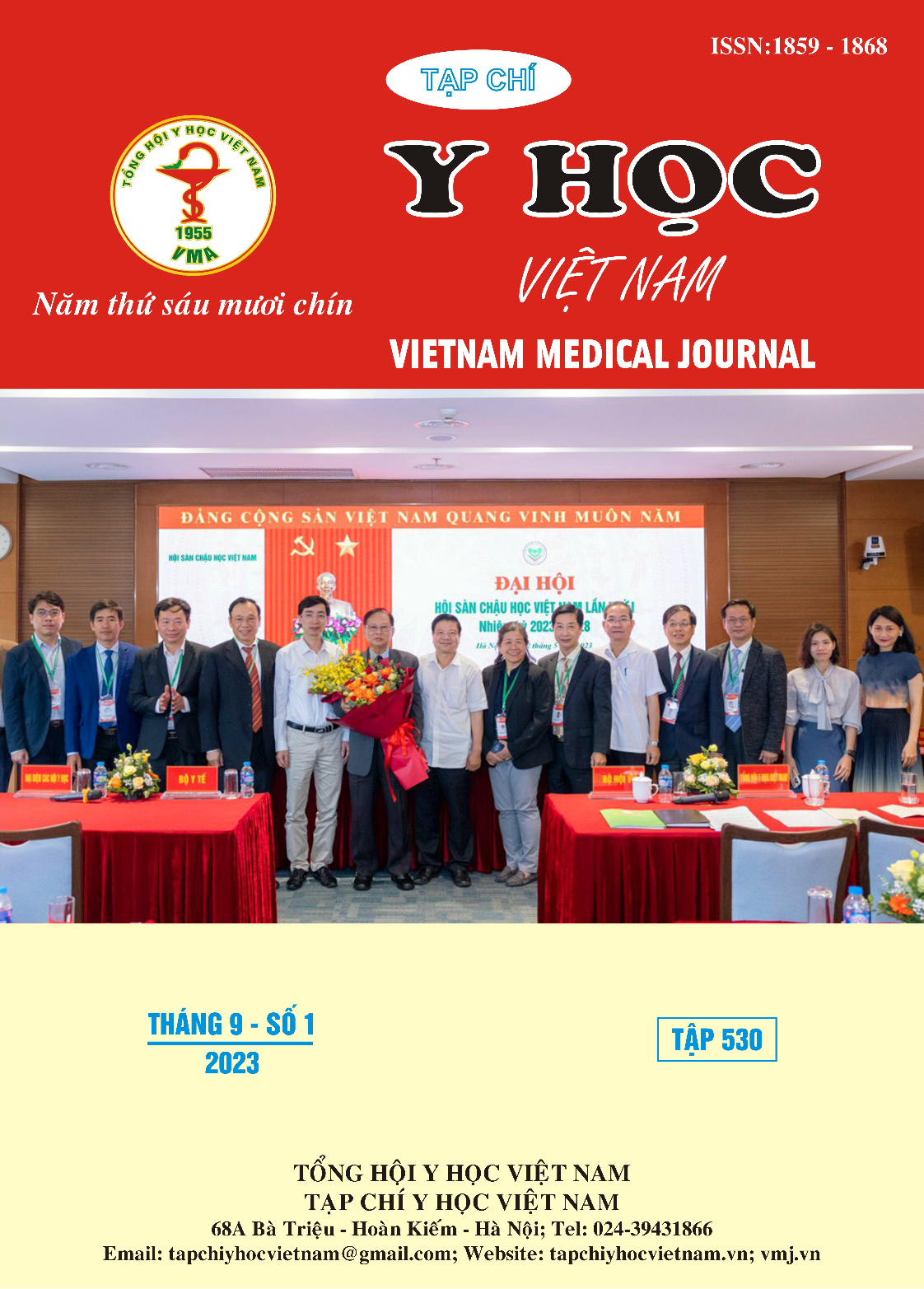MSCT IMAGING CHARACTERISTICS OF LIVER TRAUMA AT VIETDUC HOSPITAL
Main Article Content
Abstract
Objectives: study the imaging characteristics of MSCT liver trauma at Viet Duc Hospital. Subjects and methods: A cross-sectional descriptive study was conducted on patients with liver trauma who underwent MSCT at Viet Duc Hospital in March and April 2023. Results: The study included 95 patients (75 males) with a mean age of 36.2 ± 15.95 years (ranging from 10 to 73 years). Traffic accidents were the most common cause, accounting for 78% (74/95) of cases. The most frequent injury on MSCT was parenchymal contusion with 71.6% (68/95) of patients, with small contusions involving <25% of hepatic segment being the most common, accounting for 54.7% of cases. Parenchymal lacerations were present in 60% (57/95) of patients, with lacerations >3cm being the most common, accounting for 42.1% of cases. According to AAST 2018, the common grades were grade III (40%, 38 patients) and grade II (35%, 33 patients). Associated injuries in liver trauma were chest trauma in 61.1% (58/95) of patients, head trauma in 41.1% (39 patients), and adrenal trauma in 32.6% (31 patients). Conclusion: MSCT is a reliable examination for detecting liver injuries and associated injuries in liver trauma.
Article Details
Keywords
liver trauma, AAST, traffic accidents, computed tomography.
References
2. Coccolini F., Coimbra R., Ordonez C. et al. (2020). Liver trauma: WSES 2020 guidelines. World Journal of Emergency Surgery, 15(1), 24.
3. Hoàng Đình Âu và Doãn Văn Ngọc. (2023). Vai trò của cắt lớp vi tính trong chẩn đoán và phân độ chấn thương gan theo AAST 2018. Tạp chí Y học Việt Nam, 524(2).
4. Đặng Vĩnh Hiệp. (2021). Nghiên cứu giá trị của chụp cắt lớp vi tính trong chẩn đoán và điều trị bảo tồn chấn thương gan. Tạp chí Y học Việt Nam, 501(2).
5. Nguyễn Quang Huy và Nguyễn Khải Toàn. (2022). Đặc điểm lâm sàng và cận lâm sàng của chấn thương gan được điều trị bảo tồn. Tạp chí Y học Việt Nam, 517(1).
6. Newton M. V. và Subramanya S. G. (2023). Predicting and grading liver injury in the absence of computed tomographic imaging. Journal of Family Medicine and Primary Care, 12(2).
7. Lada N. E., Gupta A., Anderson S. W. et al. (2021). Liver trauma: hepatic vascular injury on computed tomography as a predictor of patient outcome. European Radiology, 31(5), 3375-3382.


